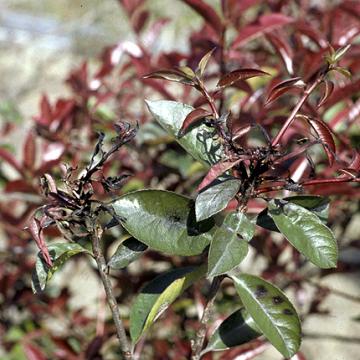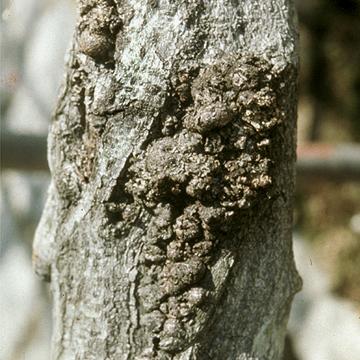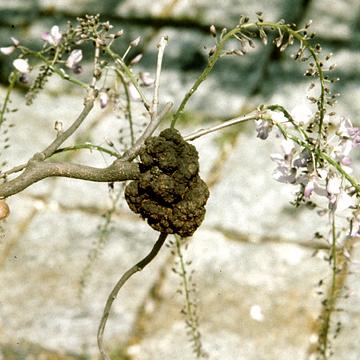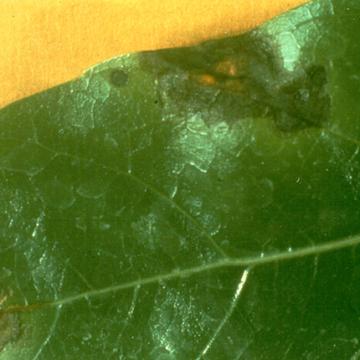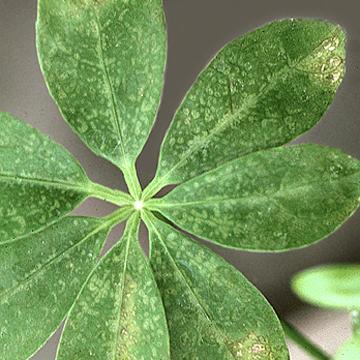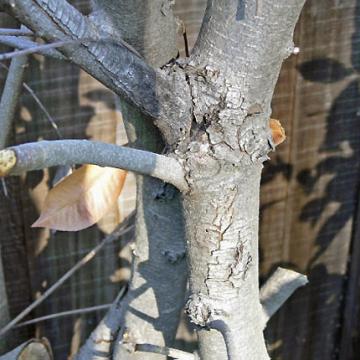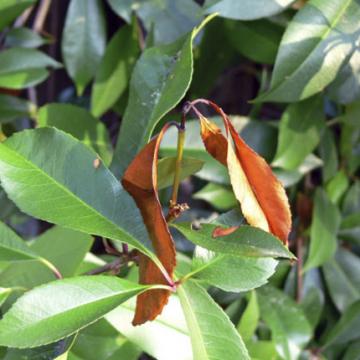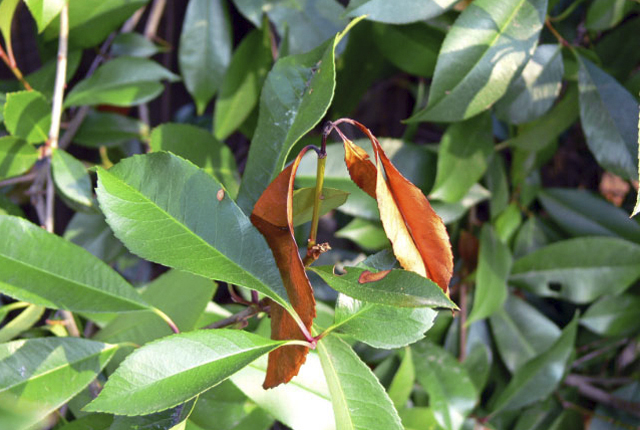DISEASE: Bacterial blight
HOST: Photinia
Symptoms of photinia bud blight shown here are similar to those of blast of pear and apple, caused by Pseudomonas syringae pv. syringae.
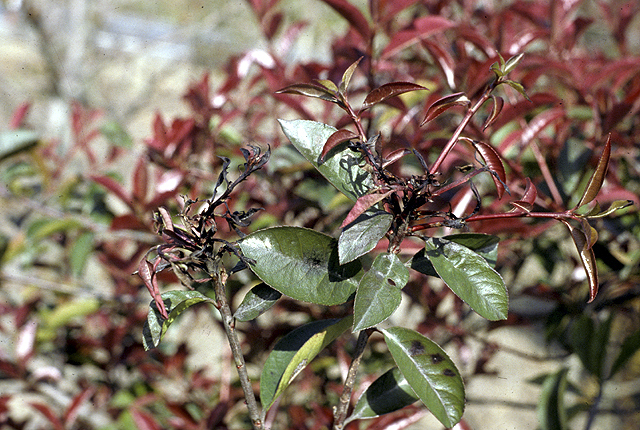
Bacterial blight | Photinia
DISEASE: Bacterial blight
HOST: Photinia (Photinia glabra)
PATHOGEN: Pseudomonas syringae pv. photiniae
SOURCE: M. Goto
DISEASE: Bacterial gall
HOST: Wisteria (Japanese wisteria)
Multiple galls on trunk.
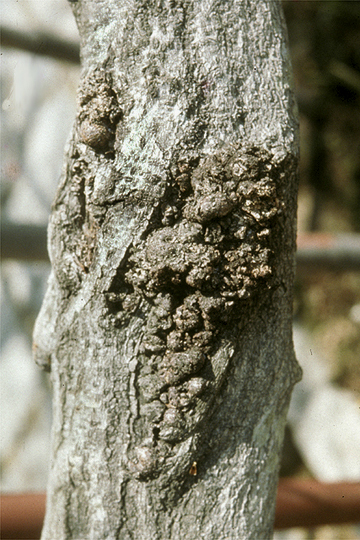
Bacterial gall | Wisteria (Japanese wisteria)
DISEASE: Bacterial gall
HOST: Wisteria (Japanese wisteria) (Wisteria floribunda)
PATHOGEN: Pantoea agglomerans pv. millettiae
PATHOGEN SYNONYM: Erwinia herbicola pv. millettiae
SOURCE: M. Goto
DISEASE: Bacterial gall
HOST: Wisteria (Japanese wisteria)
Gall on branch.
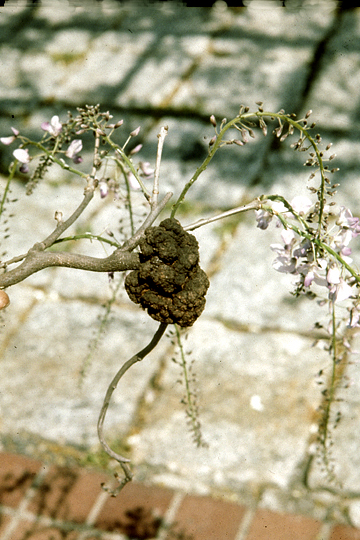
Bacterial gall | Wisteria (Japanese wisteria)
DISEASE: Bacterial gall
HOST: Wisteria (Japanese wisteria) (Wisteria floribunda)
PATHOGEN: Pantoea agglomerans pv. millettiae
PATHOGEN SYNONYM: Erwinia herbicola pv. millettiae
SOURCE: M. Goto
DISEASE: Bacterial leaf spot
HOST: Schefflera
Leaf with water-soaked lesions.
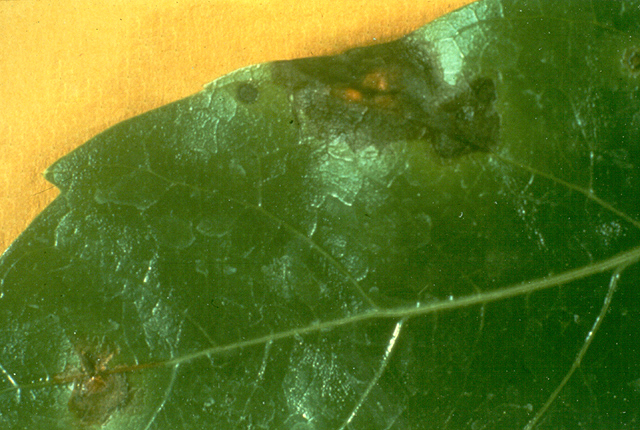
Bacterial leaf spot | Schefflera
DISEASE: Bacterial leaf spot
HOST: Schefflera (Schefflera actinophylla)
PATHOGEN: Xanthomonas hortorum pv. hederae
PATHOGEN SYNONYM: Xanthomonas campestris pv. hederae
SOURCE: M. Gleason
DISEASE: Bacterial leaf spot
HOST: Schefflera
Leaf with large, grayish necrotic areas.

Bacterial leaf spot | Schefflera
DISEASE: Bacterial leaf spot
HOST: Schefflera (Schefflera actinophylla)
PATHOGEN: Xanthomonas hortorum pv. hederae
PATHOGEN SYNONYM: Xanthomonas campestris pv. hederae
SOURCE: A. Chase
DISEASE: Bacterial leaf spot
HOST: Schefflera
Leaf with many small, pinpoint-sized lesions and a few large lesions.
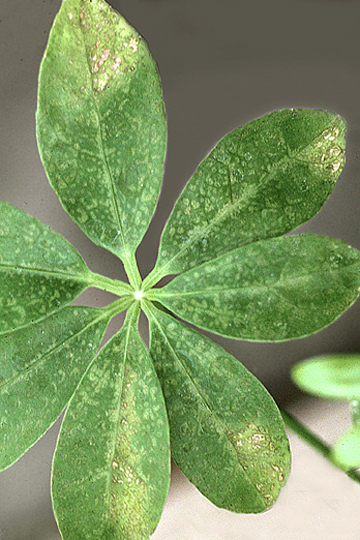
Bacterial leaf spot | Schefflera
DISEASE: Bacterial leaf spot
HOST: Schefflera (Schefflera arboricola)
PATHOGEN: Xanthomonas hortorum pv. hederae
PATHOGEN SYNONYM: Xanthomonas campestris pv. hederae
SOURCE: A. Chase
DISEASE: Fire blight
HOST: Photinia
Fire blight cankers on photinia.
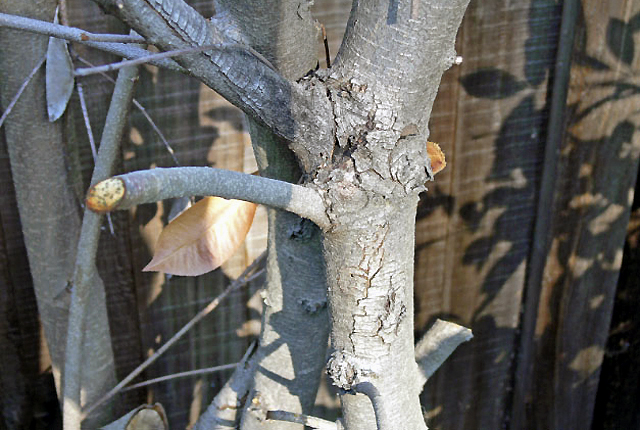
Fire blight | Photinia
DISEASE: Fire blight
HOST: Photinia (Photinia fraseri)
PATHOGEN: Erwinia amylovora
SOURCE: M. Schroth


